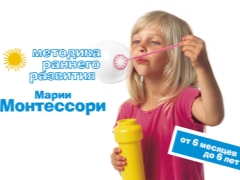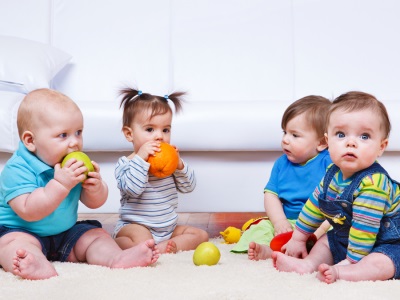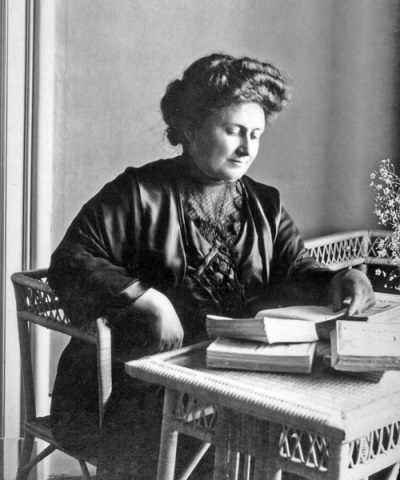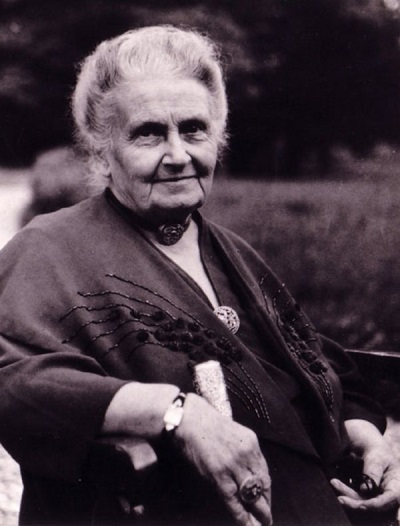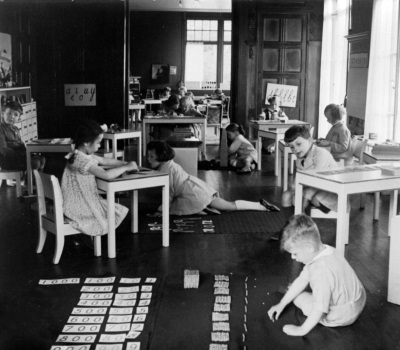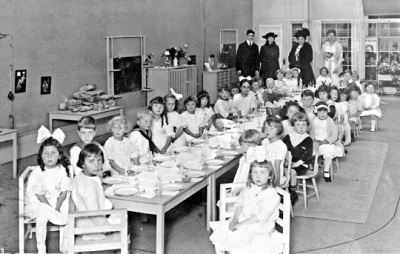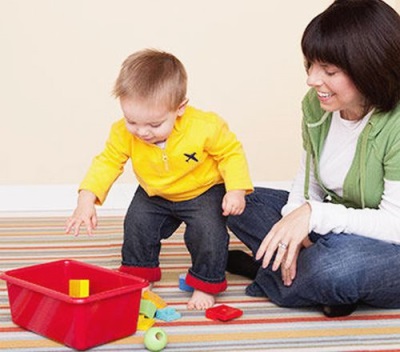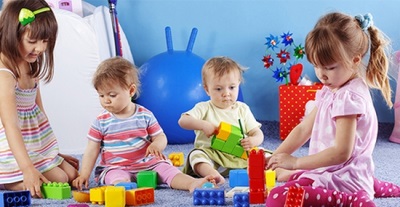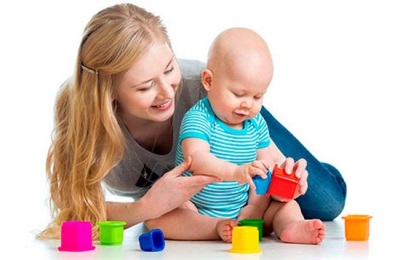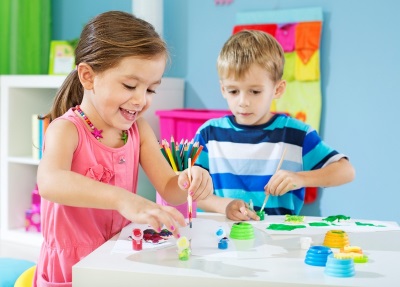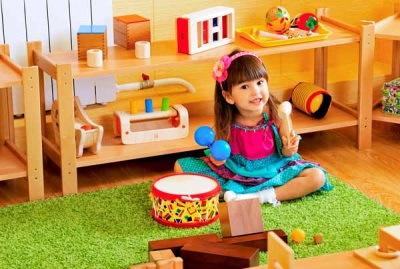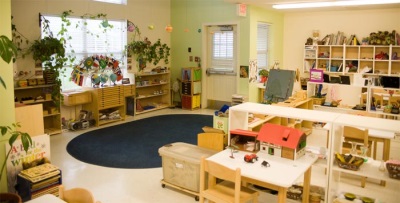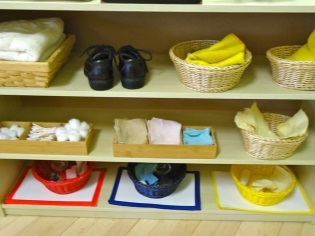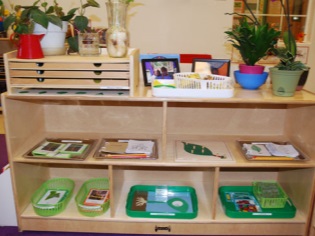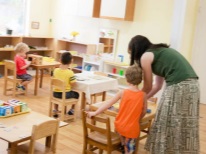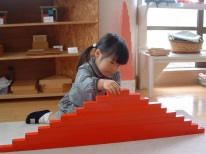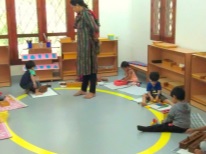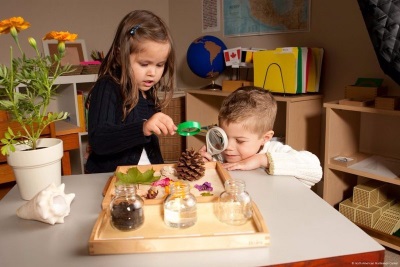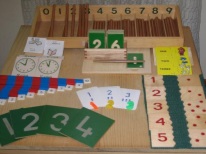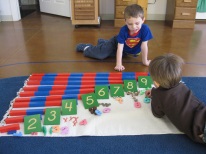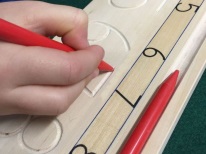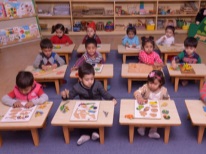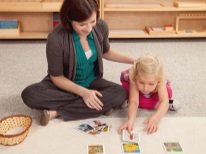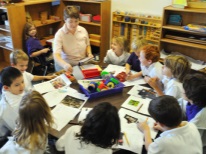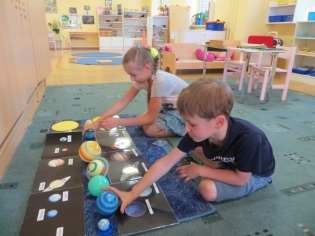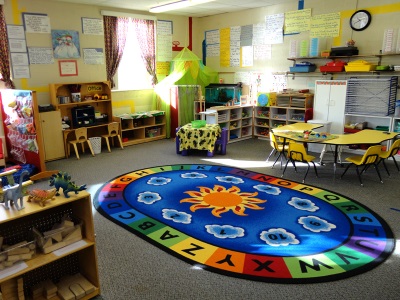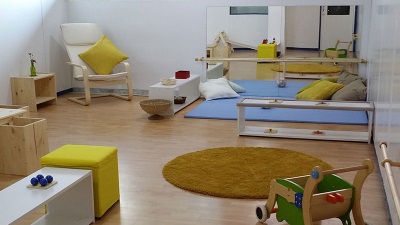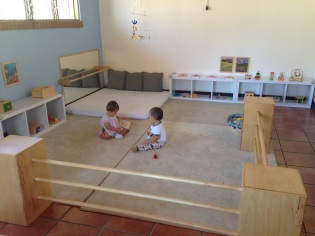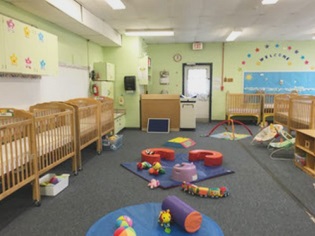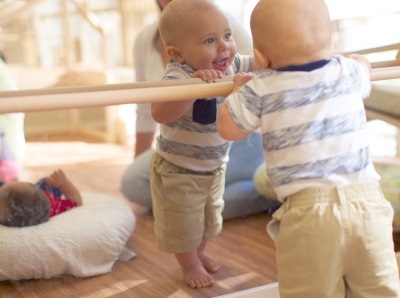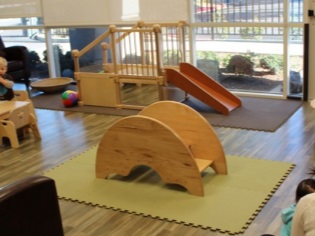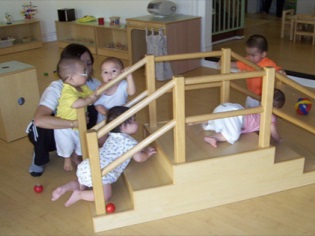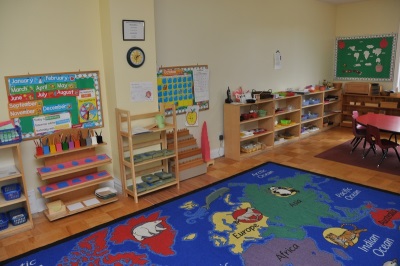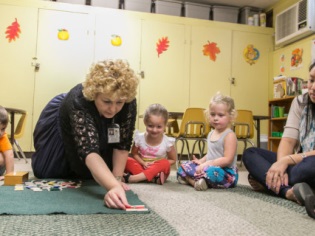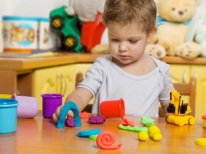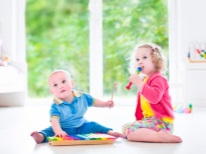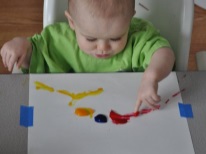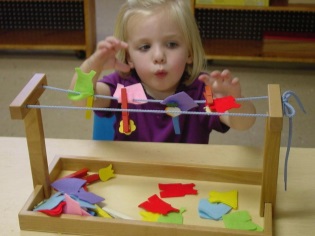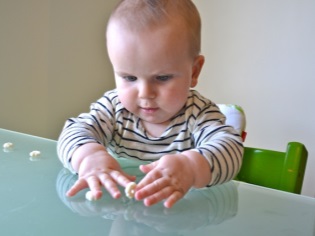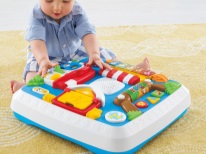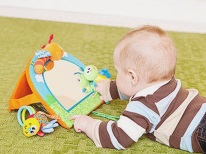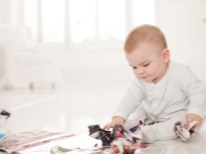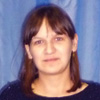Methods of early development of Maria Montessori - developmental classes for children using a special system
The unique method of early development of children Maria Montessori chooses a lot of parents to raise their children. This system of educational activities is used for the development of children and is suitable for correctional classes. Maria Montessori, one of the best teachers, was able to make a real revolution in education in her time. She called for independence in children and encouraged free education. Her system is internationally recognized in our time.
Some facts from the life of Maria Montessori
In 1870, August 31, in the city of Chiavalle, a girl was born in the family of prominent notable aristocrats of Montessori-Stoppani. The name that her parents gave her is Maria. She adopted all the best that was her parents. Father - awarded the Order of Italy, a civil servant, his mother grew up in a family of liberals.
Parents tried to give their daughter the best education. Maria studied well and had good mathematical skills. At the age of 12, the girl faced social inequality when she wanted to enter a technical school, where only boys were studying. The authority of Maria's father, her ability to learn, did her job, and she was accepted to study. She graduated from school excellently, despite the fact that she had to constantly confirm the right to study on an equal footing with young people.
Once again, she broke the standards in 1890, when she began studying at the University of Rome at the Faculty of Medicine. In 1896, for the first time in the whole period of the development of Italy, a girl doctor, Maria Montessori, successfully defended her dissertation work on psychiatry, appeared.
During her student days, Maria got a job as an assistant at a university hospital. It was then that she first encountered work with children with limited health. She began to carefully study the literature on the adaptation of such children to life in society. The work of Edward Seguin and Jean-Marc Itar had a great influence on the work of Mary.
Her confidence that the competent work of a teacher with them will have a much greater impact on their development than drugs, led her to the idea of creating a methodology based on the developing environment.
She begins to study various literature on the theory of education and pedagogy. In 1896, Mary begins work with guys who have limited abilities, and prepares them for exams at a junior educational school. The performance shown by its graduates was simply overwhelming.
In 1898, Mary decided to give birth to a child out of wedlock. In the same period of her life, she becomes the director of the Ortofrenic Institute for Special Children. To give up the business to which she decided to devote her life meant for her to betray herself, and therefore she decided to give her son up for fostering.
In 1901 she entered the faculty of philosophy.Simultaneously with her studies, Maria did not stop working at school. She was amazed at the conditions in which the educational process is conducted, the strict discipline in the classroom, none of the teachers wanted to strive for the comprehensive development of the personality. Violent methods were often used in raising special children.
In 1904, Maria became the head of the department of anthropology at the University of Rome. As before, she continued to experiment in the educational process of the school, to conduct research. And so, in 1907, with the thought that in society there is a lack of humanity and enlightenment, she opens her own educational institution - “Children's Home”. She devotes all her remaining years to the development and introduction of her system, the educational process.
In 1909, Montessori began the experience of conducting international training seminars. Then he got a lot of teachers from different countries. In the same period, she publishes her first edition, which tells about the “House of the Child” and the methods of working with children that are used in school. Maria was constantly engaged in the improvement of her system, she conducted training courses for teachers all over the world.
She was able to pick up her son Mario from a foster family when he was 15 years old. Since then, Mario became her loyal assistant, took over all the organizational moments in her work. He was seriously interested in the system of Mary and became an excellent successor to his mother.
In 1929, the Montessori International Association was created.
Because of the events taking place in the world, Maria and her son were forced to immigrate to India, where they lived for 7 years. In the post-war period, it returns to Europe and continues to develop and implement its system until the end of its life.
Without abandoning his mother’s case, Mario handed it to his daughter, Renilda. She succeeded in introducing the pedagogy of Maria Montessori to Russia in 1998.
If you are interested in the life of Maria Montessori, watch the following video.
History of the method
To introduce her system, Maria Montessori began working with special children, whose children had mental retardation, children whose adaptation to society was very difficult. Applying games that were based on tactile susceptibility, creating a special development environment, Maria sought to develop self-service abilities in these children. She tried to adapt the guys to life in society, without aiming to increase the level of intellectual development.
However, the results were very unexpected. In just a year of working with them, they were at the same level of intellectual development and even higher than their absolutely healthy peers.
Generalizing her knowledge, theoretical developments of various teachers and psychologists, her own research and experience, Maria built it all into one system, called the Montessori method.
After that, the Montessori method was also tested in the education of healthy children, which was not a problem. Her system is easily adjusted to the level of development, capabilities and needs of any child.
What is the Montessori technique
Briefly outline the basic philosophy of the Montessori method can be, saying that the child should be directed to independent action.
An adult should only help him in his independence and prompt him when asked. At the same time, it is impossible to force the child to do something, to prove to him that only your idea of the surrounding is right, when you are resting or observing the child to approach him.
These conclusions Maria Montessori came relying on the idea that:
- from the moment of birth, the child is unique. He is already a person.
- Every little person has a desire to grow and work by nature.
- Parents and teachers should help the child discover his potential, and not be ideals in character and abilities.
- Adults should only prompt the child in his independent activities, without teaching. They must patiently wait for the initiative from the child.
The essence of the method
The main motto of Montessori in the work was - help the child do it yourself.
Having given the child maximum freedom and having organized an individual approach to everyone, she skillfully directed the children to independent development, not trying to remake them, but recognizing their right to be themselves. This helped the guys to achieve the highest results on their own, without prompts from adults. Maria Montessori did not allow children to be compared, to arrange competitions between them. The generally accepted criteria for evaluation in its pedagogy is not allowed, as well as rewards, punishment and coercion of children.
Her method is based on the fact that every child wants to become an adult rather, and he can achieve this only by learning and gaining life experience. That is why the children themselves will strive to learn as soon as possible, and the teacher should only observe this process and help out of need.
Children can independently choose the pace and rhythm at which the acquisition of knowledge by them will be most effective. They can determine for themselves how much time they need to study, what material to use in training. If the need arises to change the environment, the child may well do so. And the most important independent choice is the direction in which they want to develop.
The task of the teacher at the same time to use all available means for the development of independence, to promote the development of the child's sensory perception, paying special attention to touch. The teacher must respect the choice of the child, create an environment for him in which the child will develop comfortably, be a neutral observer and assistant if necessary. The teacher should not strive for the children to be like him. It is unacceptable for him to interfere in the process of acquiring independence by a child.
Principles of the Montessori system:
- A child who makes decisions without the help of adults.
- Developmental environment that gives the child the opportunity to develop.
- The teacher, who can intervene in the development of the child, only at his request for help.
Developing environment
The developing environment is the main element, without which Montessori pedagogy will not function.
All furniture and equipment of the developing environment must be selected strictly according to the age, height and proportions of the baby. Children must cope with the need to rearrange furniture. They should be able to do it as quietly as possible, try not to disturb others. Such permutations, according to Montessori, perfectly develop motor skills.
Guys can choose the place where they will study. The room in which they are engaged should have a lot of free space, light and fresh air. Panoramic windows are welcomed to ensure maximum daylight, good lighting is thought out.
The interior should be aesthetic and elegant. The color palette for him is chosen calm, not distracting the attention of the child from the activities. Fragile objects should be present in the environment so that children learn to use them with confidence and understand their value. Also decorate the room can indoor flowers that a child can take care of, they are located at a height he can reach.
The child must be free to use water. For this, the sink, as well as the toilet bowls, must be installed at a level accessible to the child in height.
Teaching aids are located at the level of the baby's eyes, so that he can use them without the help of an adult. All copies of the material provided for the use of children, should be one at a time. This will contribute to teaching the child behavior in society, learn to take into account the needs of those nearby. The main rule of use of materials - who first took, he uses. Children must learn to negotiate with each other, share. Children acquire skills in caring for their surroundings without the help of adults.
Developmental areas
The developing environment is divided into several zones, such as practical, sensory, mathematical, language, space zone and gymnastic exercise zone. For each of these zones, appropriate materials for occupations are used. Mostly apply wooden toys because Maria Montessori has always advocated the naturalness of the materials used.
Practical
In another way it is called a zone for practical exercises in everyday life. With the help of materials from this zone, children are accustomed to living at home, in society. They form practical life skills.
With the help of exercise materials from this zone, children learn:
- take care of yourself (learn to dress, undress, cook);
- take care of everything that is near (to care for flora and fauna, to tidy up);
- various ways of movement (to be able to move quietly, silently, walk along the line, behave quietly);
- acquire communication skills (greet each other, communicate, rules of behavior in society).
The following materials are used in the practice zone:
- bizybordy (wood frames, on which a variety of fasteners are located: buttons of different sizes, buttons, bows, lacing and laces for winding on fasteners, Velcro, straps);
- vessels for water transfusion;
- cleaning agents (eg metals);
- Natural flowers;
- houseplants;
- various flowerpots for fresh flowers;
- scissors;
- owls;
- watering cans;
- tablecloths;
- strips that are glued or drawn on the floor for walking, and objects that need to be carried along them (a glass with liquid, candles);
- there are conversations and role-playing games.
The benefits for practicing in everyday life are many. The most important thing is that with their size, appearance, color combination, convenience for use, they correspond to the needs of children.
Sensory
It uses materials that contribute to the sensory development of the child. With the help of these materials, the child also develops fine motor skills, their use prepares the baby for acquaintance with various subjects of the school curriculum.
Here the following types of materials are used:
- blocks with liners, a pink tower, red rods, a brown ladder are necessary for forming the ability to determine dimensions;
- colored tablets teach to distinguish color;
- rough tablets, different types of fabrics, keyboards, boards for feeling - tactile susceptibility;
- calls, noise cylinders - develop hearing;
- sensory bags, geometric bodies, sorting machines, geometric commodes, biological commodes, constructive triangles - contribute to the baby’s ability to distinguish and name the shapes of objects, including those by touch;
- heavy plates - learn to distinguish weight;
- boxes with smells are needed for the development of smell;
- taste jars to distinguish between taste;
- warm jugs - the perception of temperature differences.
Each material develops only one of the senses, which gives the child the opportunity to focus attention on him, isolating the others.
Mathematical
Mathematical and sensory zones are closely interrelated. When a child compares objects to each other, measures them, organizes them, then he already studies mathematical concepts.Materials such as the pink tower, rods, cylinders perfectly prepare children for the assimilation of mathematical knowledge. It offers work with specific material, which makes mastering math by a child much easier.
Here are used:
- numeric rods, numbers made of rough paper, spindles, numbers and circles are needed to get acquainted with numbers from 0 to 10.
- Gold material from beads, numerical material, a combination of these materials introduce children to the decimal system.
- The tower of multi-colored beads, 2 boxes of beads and double boards - introduce the concept of "number" and numbers from 11 to 99.
- Chains of different numbers of beads give an idea of linear numbers.
- Stamps, tables of mathematical actions (addition, subtraction, multiplication, division), the game of dots help to get acquainted with mathematical operations.
- Geometrical chest of drawers, constructive triangles - will introduce the baby to the basics of geometry.
Linguistic
This zone also has a close relationship with the sensor. The materials used in the area for sensory development contribute to the development of the child's speech. Cylinders, sorters, fabrics contribute to the development of fine motor skills, which has a huge impact on the development of speech. Bells and noisy boxes are excellent ear. Biological maps, geometric shapes contribute to the distinction of form. Montessori educators offer daily speech games and exercises, stimulate the development of a child’s speech, monitor correct pronunciation and correct use of words. In the arsenal of teachers there are many variants of games for the development of speech (games for memorizing and recognizing objects, games, assignments, descriptions, stories and much more).
Can also be used:
- metal liners;
- alphabet of rough paper;
- movable alphabet;
- cards and boxes with images of various items;
- frames for hatching;
- boxes with figures for the first intuitive reading;
- subject signatures;
- books.
Space zone
The space zone in Montessori pedagogy is a zone where children receive knowledge about the reality around them. The most important thing that the teacher should take into account is the construction of a lesson from certain concrete actions to abstract ones. Often, children are offered visibility with any phenomenon and the opportunity to come to their own conclusions.
In this zone you can see:
- a variety of literature to find the necessary information;
- solar system, continents, landscapes, natural areas - contribute to the development of geographical representations;
- classification of animals, their habitat give an idea of zoology;
- plant classification, habitat - familiar with botany;
- time lines, calendars - form an idea of history;
- various materials for carrying out experiments, four elements - acquaint with science.
For gymnastic exercises
The place for this zone may not always be allocated. Often this is the space between the lined perimeter tables. In this zone, sports and recreational activities are organized for kids with aerobics, exercises with a fitball, a stick. Includes outdoor games, walking, running.
How many months is it worth carrying out such developmental activities?
The Montessori system not only has such a name “system”, but it is precisely it. She invites parents to take a more holistic view of child nature. It is very good when parents got acquainted with the basic principles and the essence of the method even before the birth of their first child. This will help them prepare for the birth of the baby with knowledge of the basic needs of the mother and the newborn. Indeed, according to Montessori, the training of the baby begins precisely with the readiness of parents for this, since they will be the most important environment for the baby.
The first two months of life, the baby and mother are still very dependent on each other, so it is important for mother to concentrate only on the child.After that, the child is already beginning to show an active interest in the surrounding world, becoming more mobile. From this point on, a mother with a baby can already begin a visit to the montessori class, which is called nido, if it has organized space for the little ones. During this period, it is more likely to be more useful for the mother, allowing her to distract from the care of the baby and diversify leisure, spending it with him. The child’s need to attend one class is not yet available. If desired, the entire development environment and the materials used (such as mobile phones) can be reproduced at home.
From the moment the crumbs begin to crawl, a visit to the nido class can give it a lot more room for development. It is possible to start leaving the baby there without a mother. This is suitable for mothers who have the need to go to work or for families who do not have the opportunity to provide a lot of free space, create a home environment and purchase materials for large movements of the crumbs that prepare it for walking. For this, various large bars, heavy tables and chairs for children, ladders will be useful. With the help of these materials, the baby will learn to stand, walk with support, climb on them and get down, sit.
When a child starts walking, he goes to a class called todler. In Russia, the creation of such classes is not yet common; this requires a special Montessori education. However, parents who are well prepared, it will not be difficult to do at home.
When visiting a todler class, the crumb encounters the need to observe the rules of behavior, learns to communicate with their peers, to interact with them, to cooperate with the teacher. This will be a good preparation of the kid to visit the kindergarten. Unfortunately, parents will not be able to recreate this at home.
It should be borne in mind that up to 3 years, the long separation of the crumbs with the mother is very difficult. Therefore, a half-day visit to the classroom would be ideal. This will not be possible if the mother goes to work and is busy full time. But not every parent will be able to afford financially a visit to a private montessori todler class, if the mother continues to be a housewife. If the baby goes to school 2-3 times a week, and not every day, then he will need more time to join the work. Such visits are suitable as a compromise solution.
We conclude Attending montessori classes can be started from a child reaching the age of 2 months, if the mother has a need for this. For a child it will be interesting, not earlier than from the moment when he crawls. A visit to a Montessori class up to 3 years will give a good base for future visits to kindergarten.
Montessori Classes and Montessori Classes
Montessori pedagogy, as already mentioned, is based on the independent development of the child in a specially prepared developing environment. The process of education is based on this, where the children express their needs, and the teacher helps them in their activities, through observation and individual work with each.
Maria Montessori herself has always called the learning process just occupations, not games, despite the age of the children. Educational material she called didactic aids, made from natural materials. All materials offered for classes were unique, being in the class only in 1 copy.
In her method, Maria Montessori offers 3 types of lessons:
- Customized. The teacher works with only one student, offering him educational material. He shows and explains how to work with him, where to apply. The materials used should excite the child’s interest, attract it, be different from others in any property, be it thickness, height, width, be able for the child to check for errors, seewhere he performed the action wrong. After that, the child starts independent activities.
- Group. The teacher deals with the guys the level of development of which is approximately the same. The rest of the children in the class work independently, without disturbing the group. The same work algorithm is observed as in the individual lessons.
- Are common. The teacher works with the whole class at once. Lessons are not long, concise. Mostly general classes are held in music, gymnastics, biology, history. After the basic information has been received by the children, they independently decide to engage with special material on the topic or they are not interested at the moment. Work continues independently.
In Montessori pedagogy, there is a division of children into 3 age categories:
- Children from birth to 6 years. This age period is called building, the child is capable of developing all the functions.
- Children age 6-12 years. This period is called research, the child is interested in the world around him, events and phenomena.
- Children age 12-18 years. This last age period is called the scientist. The child sees the relationship between various facts, seeks his place in the world, creates his own picture of the world.
Montessori schools have different age classes, from 6 to 9 years old, and from 9 to 12. A child can go to the next class only when his needs and abilities allow him. The use of different age classes helps older children to become more caring, and the younger ones gives confidence.
In the class there is no clear statement of goals and objectives for the school year. The program is calculated for 3 years, but at what pace a student will learn it depends only on him. If a fast paced pace suits him, this is good; if a child is used to working slowly and thoroughly, no one will rush him. By independently choosing a zone for classes, the child can work there individually or in a group of other children. The most important rule that everyone should abide by - do not bother to work for another. The child builds his relations in the team himself. Teachers observe everything that happens in the classroom, and they help if necessary.
Watch the following video about the features of the technique.
Pros and cons of the system
Despite the fact that Montessori pedagogy is recognized as one of the best in the world, there are many who criticize it. Therefore, you should carefully examine its positive and negative aspects.
pros
- Montessori children develop without the intervention of adults and pressure from outside.
- Individual pace of development.
- The guys learn the world, making discoveries. This contributes to a better absorption of the material.
- Montessori pedagogy tends to give children freedom.
- Pupils learn to respect the personal free space of others.
- No criticism, negativity, violence against children.
- The intellect of the child develops through the senses. Much attention is paid to the development of motility, which is important for its development as a whole.
- Different age groups are formed based on the interests of children.
- Education is not provided by adults, but by older children in a language that is accessible to the child. Schooling to take care of others.
- Pupils receive an important skill from an early age - to make decisions on their own.
- Self-care skills are quickly inculcated.
- The ability to interact in society develops, self-discipline is fostered: you can not interfere with others, make noise, clean up the workplace, have patience and much more.
- Montessori pedagogy involves cooperation with adults.
Minuses
- Little time is devoted to the development of imagination, creativity, insufficiently developed communication skills.
- At preschool age, the game is the leading activity, but Montessori believed that the child does not get any benefit from practical games for playing games and toys.
- Children have little acquaintance with fairy tales that tell about the opposition of good and evil, teach ways out of life situations.
- When entering a traditional school, it is difficult for a student to reorganize to a different attitude towards the teacher. In the Montessori system, the teacher is only an observer, and in school the teacher is an authority.
- There are cases when children hardly adapt to the traditional school and its discipline.
- Children do not make a lot of effort while working with objects, in the future this may be manifested in the fact that the child will have difficulty in forcing himself to perform active actions.
- A small amount of motor activity. Mostly classes are held in a relaxed atmosphere, excluding her.
Commandments for parents
- Children learn what surrounds them.
- If you constantly criticize the child - he will learn to condemn.
- Children who are often praised learn to evaluate.
- Demonstrating to your child a hostile attitude, you teach him to fight.
- A child will learn to be fair if you are honest with him.
- Making fun of a child, you bring shyness in him.
- A child learns to believe if he lives with a sense of security.
- The child will constantly experience feelings of guilt if you disgrace him.
- Approval teaches the kid a good attitude.
- Indulgence will teach a child to be patient.
- Often encouraging a child will help him gain confidence in himself and his abilities.
- A child will learn to find love if the atmosphere of friendship surrounds him and he feels necessary.
- You can never talk about the baby badly, either in his presence or in his absence.
- So that there is no room for bad things, focus on bringing up the good in him.
- Always listen to the child who approached you and answer his questions.
- Have respect for the child who made the mistake, let him correct it.
- Help your child find it if necessary, and be inconspicuous if the child has already found everything.
- To help your child learn new things, use care, restraint, silence and love.
- Address the child only in a good manner, give him the best that you have.
Watch the following video about the technique of Maria Montessori.
